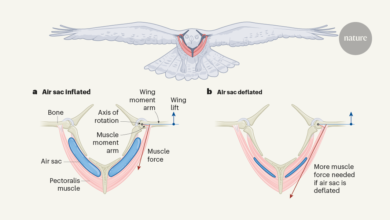

Encouraging female scientists to mentor other female scientists might contribute to gender silos in some fields.Credit: Getty
An analysis of more than two million papers in the life sciences shows a strong gender bias in citations: papers with female lead authors get fewer citations than do those led by male authors in subsequent male-led papers1. This pattern holds true in many subfields of the life sciences, including those with relatively equitable gender representation.
The study’s authors say that the imbalance is caused in part by gender specialization in certain research areas. But there’s another factor at play — a researcher’s mentors, co-authors and conference buddies are likely to share their gender identity.
The study was published earlier this year in Research Policy.
Gender gaps
Women now earn the majority of life-science PhDs, closing the gender gap in the number of scientists. But the number of citations that female scientists’ papers receive has not kept up, which is why the authors wanted to understand “how the gender bias changes through time”, says Sen Chai, an innovation scholar at McGill University in Montreal, Canada, and a co-author of the study.
To answer this question, the authors categorized life-sciences papers published between 2002 and 2017 by the gender of their lead authors, which they defined as the first and last authors. The team then and analysed how often these papers were cited in subsequent studies.
Scientific collaborations are precarious territory for women
The authors found evidence of bias for papers led by scientists of either gender: those led by men received more citations in papers led by men, and those led by women received more citations in papers led by women. This bias is weaker among younger scientists.
The analysis also found that most of the bias arose from the fact that certain subfields are dominated by one gender. But another factor was “gender homophily”: the tendency for scientists’ professional connections to be biased towards their own gender.
To confirm the source of the gender bias, the authors also compared papers that listed an author’s first name — a potential source of gender information — with papers that didn’t. They found that the citational bias persisted regardless of whether the full name was given, suggesting that factors other than direct discrimination are at work.
“We’re seeing this gender bias decrease, but the bad news is that the gender homophily is still there,” says Chai. “Women still tend to build more on women’s work, and men still tend to build on men’s work more.”
Scientific silos
Efforts to increase gender equity in sciences have generally focused on increasing the number of women in the sciences, and on recruiting female mentors for female scientists. But the analysis suggests that the latter practice creates gender silos in fields. “We need to go kind of one step further and really getting these two networks to integrate,” Chai says.
The authors suggest randomly assigning seats at certain events at scientific conferences, which they hope would diversity people’s professional networks and, in turn, the work that they cite. More integrated networks would lead to better diffusion of knowledge, says co-author Sifan Zhou, an economist at Xiamen University in China, and thus would advance science.
The new study does a good job of teasing out the effect of homophily by controlling for factors such as subfield, says Gita Ghiasi, an interdisciplinary scholar at the University of Ottawa, who has also analysed the effect of gender homophily on citations. The work adds to evidence that citations are biased, she says, and that as a result “they actually add to the inequality we already have in science”.
Editor’s note: this article’s use of the terms ‘male’ and ‘female’ reflects how people are described in the featured paper.





